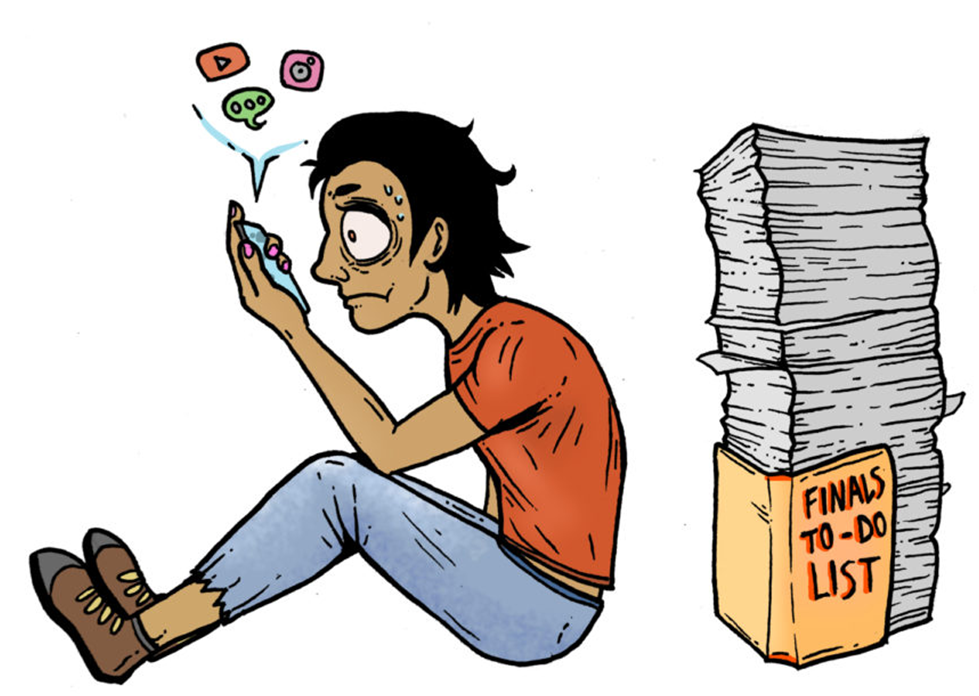You have a deadline approaching. However, instead of completing your task, you are distracted by various activities such as watching movies, checking email, social media, browsing youtube etc. In fact, you know you should be working, but you don’t want to do anything. This is known as procrastinating. Everyone has heard about and indulged in procrastination at some point in their life. When people procrastinate, they waste their free time and put off crucial activities that should be completed. Then, when it is too late, they panic and wish they had started sooner. If this is the course of action you take when you have to meet a deadline, then this article will help you stop procrastination once and for all.

What is the Science Behind Procrastination?
To do away with procrastination, you must first understand why you procrastinate. Behavioural psychology research has discovered a phenomenon known as “temporal inconsistency”, which refers to the tendency of the human brain to value present benefits more highly than future ones.
The best way to grasp this concept is to imagine yourself as having two selves: your Present, and your Future Self. When you create objectives for yourself, such as reducing weight or learning a language, you are making plans for your Future Self. Researchers discovered that when you think about your Future Self, it is quite easy for your brain to perceive the worth of doing activities that would help you in the long run. In other words, long-term rewards are important to the Future Self.

While the Future Self can make goals, only the Present Self can act on them. Thus, when it comes to making a decision, you are no longer choosing for your Future Self. You are now in the present moment, and your mind is occupied with the Present Self. Scientists have discovered that the Present Self prefers immediate reward over long-term gain.
As a result, the Present Self and the Future Self frequently clash, causing you to procrastinate.
The Procrastination-Action Relationship
You can’t motivate the Present Self with long-term repercussions and rewards. Instead, you must figure out how to get a reward or penalize yourself in the present. This is precisely what happens when we eventually move beyond procrastination and take action.

Let’s look at the image above. The graph showcases the relationship between suffering and time. From the graph, it is visible that the time during procrastination is very agonising. When the agony of procrastination eventually gets to you, you cross the “Action Line”. Then, the discomfort you experience begins to decrease. Thus, it is evident the issue does not lie in doing the work. On the contrary, it lies in beginning the task.
Some tips to Stop Procrastination
Here are some ideas you can utilize to bring your future incentives closer to your Present Self, and in turn stop procrastinating.
Subdivide enormous jobs into smaller ones.
Breaking huge jobs down into smaller sub-tasks can motivate you to take action as smaller tasks feel less overwhelming, thus, allowing you to experience a steady stream of satisfying progress. Furthermore, doing so also helps you from an organisational standpoint. With smaller tasks, you can easily identify what exactly you need to accomplish in order to reach your goals, allowing you to establish plans with a high level of detail.
Prioritize your tasks.
Prioritizing your tasks can help you determine which tasks to work on and when to work on them. This will save you from procrastinating by wasting time on small activities while ignoring important ones. Additionally, it will keep you from feeling overwhelmed because you don’t know where to begin or which tasks you should be working on.
Improve your productivity cycles
Different people have different productivity cycles, which means they are productive at different periods of the day. An excellent strategy to reduce procrastination is to discover your peak times or times of day when you have the highest productivity. Design your schedule so that the majority of your work is completed during those times.
Create a routine.
Establishing a consistent daily/weekly/monthly schedule can assist you in avoiding procrastination.
Set deadlines for yourself.
Setting deadlines for yourself can lessen the likelihood of procrastination since deadlines act as a commitment mechanism, allowing you to plan ahead and motivate yourself.
Make use of timeboxing.
Timeboxing is a technique in which you designate specified blocks of time, known as “timeboxes”, to activities you want to undertake or tasks you need to complete. For example, if you keep putting off a bothersome assignment that won’t take long to complete, set a 30-minute time limit for it in the evening and accomplish it then.
Remove any distractions.
Removing distractions from your environment increases your chances of focusing on your work and avoiding procrastination. For example, if your phone makes a loud noise every time you receive a notification, you will be continually distracted while working, making it difficult to focus. In cases like this, put your phone on silent or switch it off while working, so that you don’t get distracted.
Conclusion
This article has provided you with some important tools and techniques you will need to overcome your procrastination. It is now up to you to put what you’ve learnt into practice. Overall, the most important thing to understand is that you cannot be passive in your approach while dealing with procrastination. Things will always remain the same unless you are prepared to put in the necessary effort. However, if you put in the effort and work smartly by analysing your problem and devising efficient solutions, you will be able to quit procrastinating and begin getting things done.
Share with your friends





